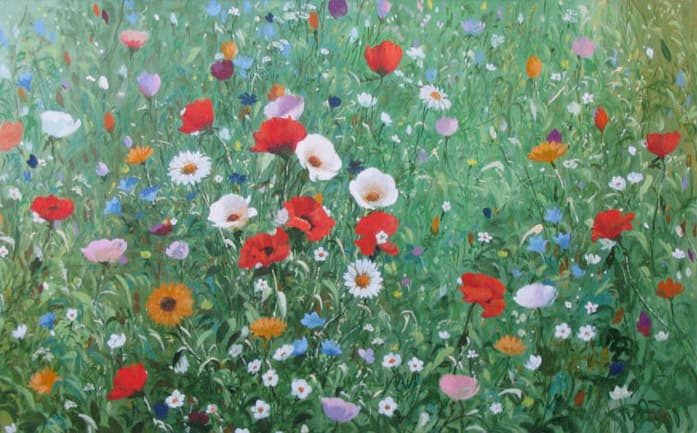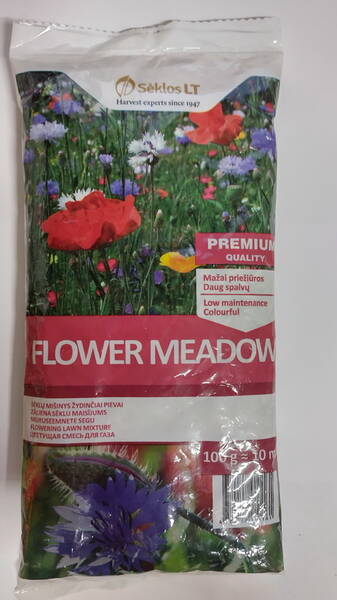Your shopping cart is empty!
Grass and flower seeds for Bloominglawn "Mauritanian"
Grass and flower seeds for Bloominglawn "Moorish lawn".
100,0 g = 10 m2.
* Moorish lawn.
This type of lawn has been known since ancient times. It was very popular in the Middle Ages, but later, when green lawns of cereal grasses and flower beds began to be arranged in the gardens, then the Moorish lawn went out of fashion.
In recent years, interest in it has increased markedly. Of course, you should not allocate large areas on the garden plot for such a “flowering meadow”, replace them with mixborders, alpine slides or other flower beds, but there will always be a place (near a hedge or under the crowns of fruit trees) that can be decorated in this way. In large gardens and parks, such lawns are usually arranged on the edges.
What is the Moorish lawn?
Usually, it is a mixture of cereals and various flowering plants. Depending on the components that make up the mixture, one-year and perennial lawns are distinguished. And although they are very similar in appearance, the care differs significantly. The annual lawn consists of thin-stemmed grasses and beautiful flowering annuals.
The first group may include perennial and annual ryegrass, common bent grass, meadow bluegrass, and sometimes annual bluegrass. A mixture of flowering letniki usually includes 10-15 species that meet the following requirements: plant height no more than 30-50 cm, not too much branching, and a short time from sowing to flowering. The more diverse the range of letniki, the longer the flowering.
Suitable for Mauritanian lawn: calendula, blue and musky cornflowers, blue and red flax, delphinium, gypsophila, iberis, nemesia, chrysanthemum, nigella, Chinese carnation, toadflax, escscholcia, etc.
100,0 g = 10 m2.
* Moorish lawn.
This type of lawn has been known since ancient times. It was very popular in the Middle Ages, but later, when green lawns of cereal grasses and flower beds began to be arranged in the gardens, then the Moorish lawn went out of fashion.
In recent years, interest in it has increased markedly. Of course, you should not allocate large areas on the garden plot for such a “flowering meadow”, replace them with mixborders, alpine slides or other flower beds, but there will always be a place (near a hedge or under the crowns of fruit trees) that can be decorated in this way. In large gardens and parks, such lawns are usually arranged on the edges.
What is the Moorish lawn?
Usually, it is a mixture of cereals and various flowering plants. Depending on the components that make up the mixture, one-year and perennial lawns are distinguished. And although they are very similar in appearance, the care differs significantly. The annual lawn consists of thin-stemmed grasses and beautiful flowering annuals.
The first group may include perennial and annual ryegrass, common bent grass, meadow bluegrass, and sometimes annual bluegrass. A mixture of flowering letniki usually includes 10-15 species that meet the following requirements: plant height no more than 30-50 cm, not too much branching, and a short time from sowing to flowering. The more diverse the range of letniki, the longer the flowering.
Suitable for Mauritanian lawn: calendula, blue and musky cornflowers, blue and red flax, delphinium, gypsophila, iberis, nemesia, chrysanthemum, nigella, Chinese carnation, toadflax, escscholcia, etc.

Moresque lawn (Mauritanian).











